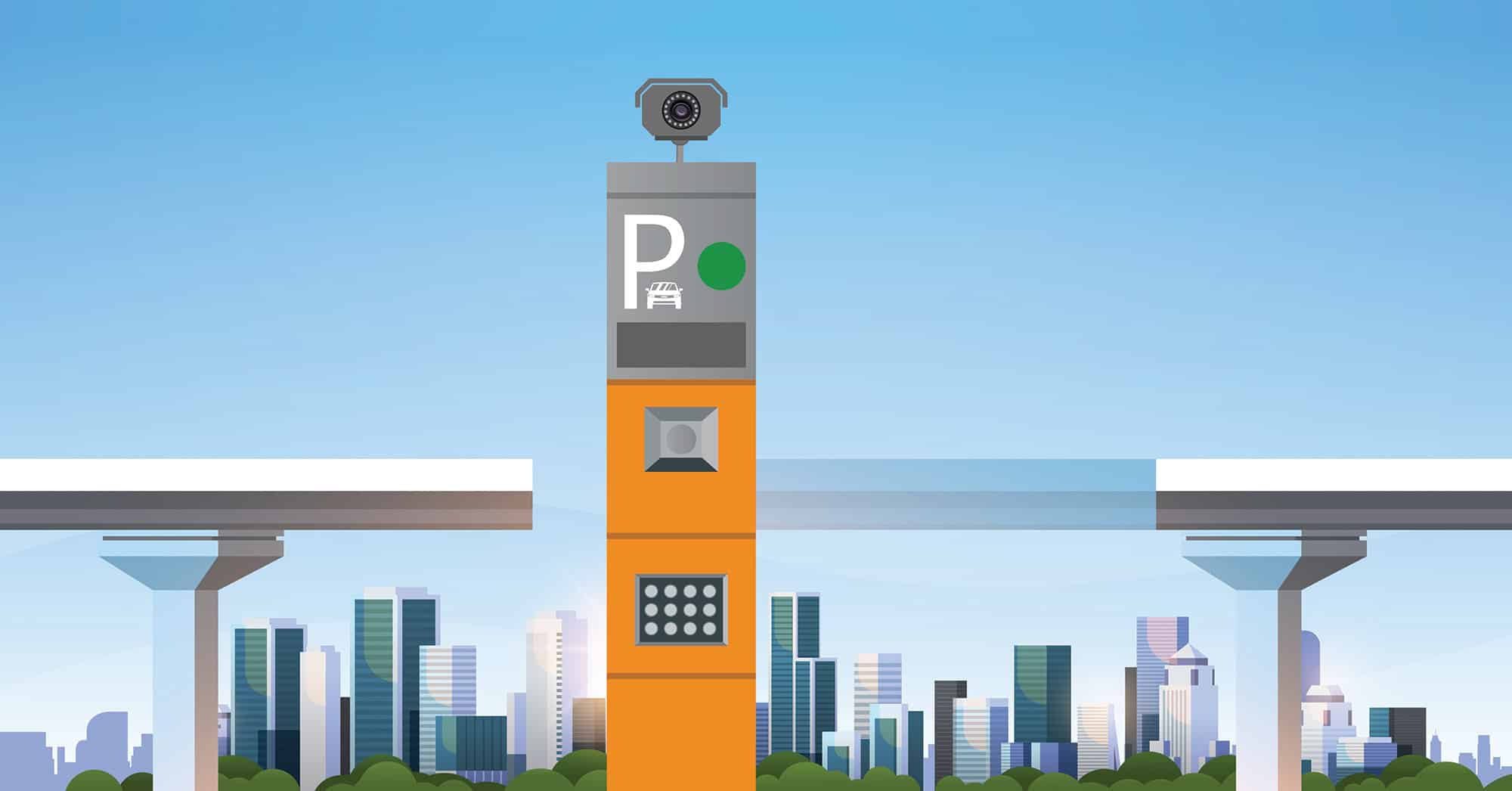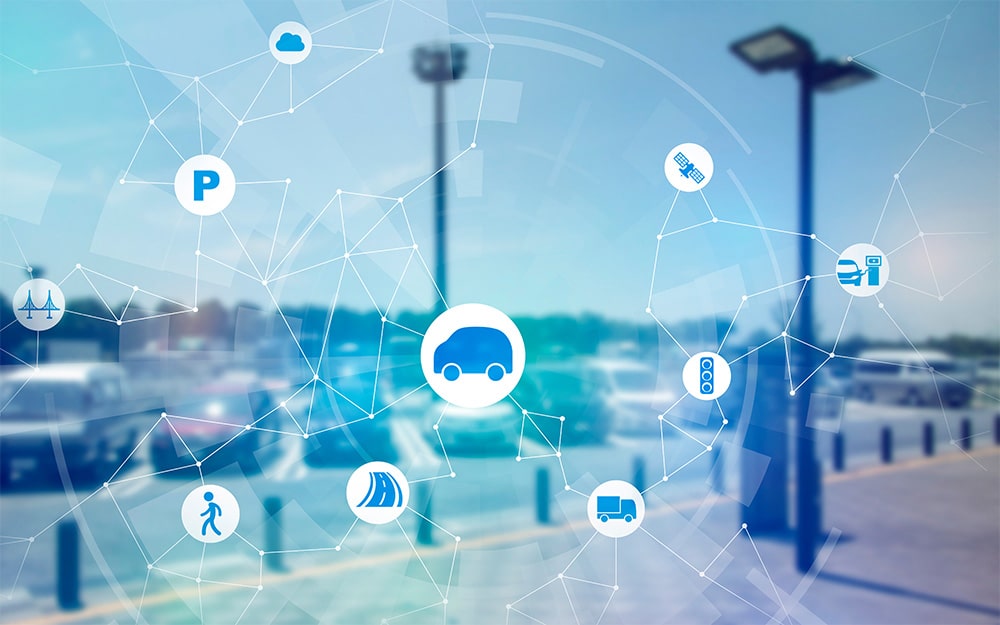Digital
Daily-Decision
Parking
Driving Sustainable Parking Culture on Campus
Universities are leading the way in driving sustainability on campus through numerous transportation initiatives and programs. These can include encouraging shuttle or public transit use, bike-friendly campuses, electric vehicle incentives, and ride sharing discounts among other programs. The specific roadmap for transportation sustainability on campuses is as varied as the institutions themselves, with university leaders eager to back innovative new approaches instead of relying on old methodologies.
Table of Contents
It goes without saying that parking plays a significant role in transportation sustainability programs. Read over the sustainability objectives of almost any college in America and you’ll consistently find that reducing the number of single-occupancy vehicles and drive-alone commuters is one of the top priorities. That makes it all the more surprising that until recently parking management systems and technology have rarely been used to shape forward-thinking parking policies or contribute to milestones in the wider transportation ecosystem. In fact, many of the legacy systems and traditional business models used for campus parking do exactly the opposite, finding themselves at odds with the pressing need to accelerate sustainability initiatives.
Partially sped up by the pandemic, universities have increasingly embraced using digital parking platforms and other smart mobility solutions on campus. Beyond modernizing the overall parking experience, the flexibility of these technologies is also creating new avenues to shake up traditional parking models like never before. Now, universities are expanding digital parking capabilities to more areas on campus by implementing daily-decision parking models. Empowered with agile technology and data-driven decisions, the daily-decision approach is giving university parking departments a valuable and effective tool to encourage sustainable transportation culture in the long term.
How Inflexible Tech is Limiting Change
In a way, university campuses are self-contained cities with their own unique parking zones and rules. Added to that, college parking programs must accommodate a wide range of people with specific needs, including students, faculty, visitors, support staff, guests, and more. These requirements, along with a reliance on older parking technology and systems, make changing the traditional parking paradigm at universities a particularly difficult challenge to tackle. Usually, the only parking option for students, faculty, and staff who need to drive to campus (or just prefer it) is to buy and display a long-term permit. Lacking other options for parking, many of the alternative transportation efforts and incentives at the heart of campus sustainability programs are forced to still exist in tandem with these traditional parking models in some capacity.
In the past, universities have been hesitant to invest in new parking technology, especially when the end goal is to reduce the total number of parkers. At the same time, outdated parking technologies and models continue to be a major roadblock when coming up with new ways to shift parking behaviors and attitudes. This challenge came to the forefront during the pandemic, which had an outsized effect on university parking programs compared to those in other locations. The immediate impact on parking revenue was striking. On top of that, many institutions, particularly those using older technologies, struggled to quickly adjust to the “new normal.” Across the country, the pandemic acutely highlighted how inflexible parking technologies can hold back innovation and prevent universities from embracing new models, whether it’s something like hybrid work or a bigger transportation initiative.
Often, it’s technological limitations, not a lack of ideas, that prevent campus parking programs from trying new things. The continued reliance on set-it-and-forget-it permit models in-turn holds back the capacity to change parking behaviors. As it stands, once a person buys into the current parking system, they rarely, if ever, are confronted with that decision. Even with access to discounted or free sustainable options, a person who has sunk money into a semester-long permit has every reason to want to use it as much as possible. Some campuses have tried restricting or limiting who can buy permits to reduce the total number of single-occupancy vehicles. And while this strategy works in theory, it still sustains a culture where driving to campus is the norm and can also potentially limit equitable parking access for low-income students and other drivers. In other words, for the people who primarily commute to campus by car, the current way of doing things offers little or no incentive to change their behavior in the long run.
Suffice it to say, a lack of viable alternatives to the “all-you-can-eat” parking permit model can have an outsized effect on discouraging the use of sustainable alternatives. But on the other hand, simply suggesting we eliminate all permits or drastically reduce available parking on campus is impractical, unrealistic, and unfair. Luckily, campuses across the country are leveraging new innovations to try something new.

Leveraging Daily-Decision Parking to Shift Parking Culture
Many universities have discovered that the culture of using single-occupancy vehicles is intrinsically linked with the business models and parking options available on campus. Increasingly, the flexibility and customization of modern parking solutions are giving campus parking programs new tools to tackle sustainability in the long term.
It’s worth noting that the use of modern digital parking and smart mobility solutions on campus isn’t uncommon. In fact, during the pandemic the sudden need for contactless payment options accelerated their adoption considerably. Until recently, however, these newer parking technologies have primarily been used as an additional payment option for short-term lots and visitor parking. Now, digital parking is playing a crucial role in implementing new “daily decision” parking models that seamlessly integrate with transportation demand efforts and sustainability goals.
In a nutshell, daily-decision parking moves away from static, long-term permit models by offering customized, short-term parking options for students and staff. On the surface, daily-decision might not seem very transformative and is often misunderstood to simply be a daily rate based on the pricing of the existing permits. But in addition to reducing the operational complexity that comes with managing physical permits, daily-decision is helping effectively shift parking culture to be more sustainable in several crucial ways:
First, eliminating the set-it-and-forget-it permit model forces drive-alone commuters to confront the decision to park in the first place. Bringing people face to face with the costs of parking is an effective strategy to make people change their commuting habits. More than simply raising prices, it makes the cost of commuting tangible to the everyday user. Second, the backend flexibility of modern parking platforms enables universities to completely re-evaluate the value of parking as a commodity altogether while maintaining equity. Using a daily-decision model, universities can fine-tune pricing for in-demand times and areas or extend equitable rates and permissions to different stakeholder groups.
Driving Change by Adding Value
Implementing new technologies and changing long-established behaviors and attitudes requires significant buy in from faculty, students, and other key stakeholders. Therefore, efforts to reduce single-occupancy vehicles on campus go hand-in-hand with making university parking programs as equitable, convenient, and user-friendly as possible. In backend flexibility and popularity, digital parking solutions have a distinct advantage for universities looking for practical paths forward. However, it’s not enough to leverage any digital solution, but one that people want to use.
Expanding digital parking and daily-decision parking to more parts of campus is helping universities effectively shift parking culture to be more sustainable by adding value to existing programs. Daily decision streamlines the parking experience, offering customized rates automatically to different groups, occupancy maps, and other user-friendly features. Additionally, flexible payment options outside of a smartphone app, like pay-by-text or by QR code, make the benefits of these new programs accessible to less tech-savvy users. Ultimately, modernizing and improving the parking experience significantly eases the transition to new models.
Laying a Flexible Foundation for the Future
When encouraging big changes in commuter behavior, especially something as established as campus parking, there is no one-size fits all approach. Configurable, flexible parking technology is precisely what universities need to experiment with new approaches and embrace innovation. It also allows universities to make meaningful changes with minimal investments in new hardware and with less risk. Another distinct advantage of digital parking models is that they can be rapidly adjusted and tweaked to address the unique needs of staff, labor unions, student groups, and other stakeholders.
It’s also worth remembering that changing parking models on campus isn’t a problem for tomorrow – it’s one for today. Practically speaking, at least for the foreseeable future, people will continue to need parking on campus. Novel digital approaches like daily decision are helping campus parking programs be the best they can be as they navigate their own pay to a more sustainable future.
-
This author does not have any more posts.

Bridging the Generation Gap
Technology’s Transformative Role in Shaping the Parking Workforce

The Prudent Choice
Why Parking Operators Should Remain Technology Agnostic

What innovation will have the most significant impact on parking and mobility in the next five years?
Innovations in AI, IoT, and 5G are set to revolutionize





